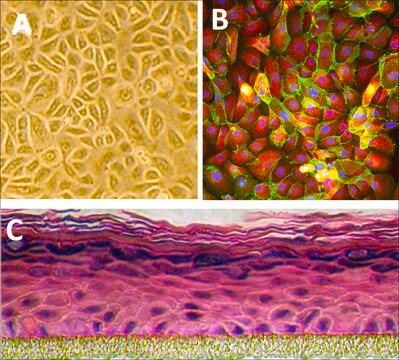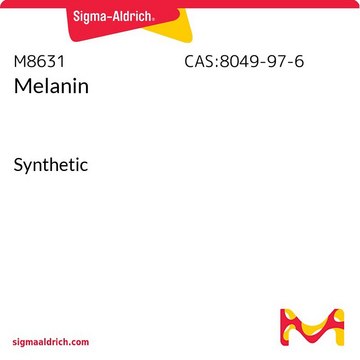104-05A
Human Epidermal Melanocytes: HEM, adult
Synonym(s):
HEM cells
About This Item
Recommended Products
biological source
human skin (normal abdominal)
Quality Level
packaging
pkg of 500,000 cells
manufacturer/tradename
Cell Applications, Inc
growth mode
Adherent
karyotype
2n = 46
morphology
Epidermal
technique(s)
cell culture | mammalian: suitable
relevant disease(s)
metabolic disorders
shipped in
dry ice
storage temp.
−196°C
General description
Epidermal melanocytes are pigment-producing cells located at the basal level of epidermis, where they interact with keratinocytes via cellular processes called dendrites. Melanin, the pigment produced by melanocytes and responsible for skin color, is then transferred to keratinocytes, where it is stored in vesicles called melanosomes located around the nucleus to provide protection from UV radiation. HEM maintain their characteristic shape in culture for many generations. They produce melanin and serve as a useful cell model for the studies of melanocyte proliferation and differentiation, as well as progression of melanocytic neoplasia.
Cell Line Origin
Application
Components
Preparation Note
- 2nd passage, >500,000 cells in Basal Medium containing 30% FBS & 10% DMSO
- Can be cultured at least 12 doublings
Subculture Routine
Disclaimer
Storage Class
11 - Combustible Solids
wgk_germany
WGK 3
flash_point_f
Not applicable
flash_point_c
Not applicable
Choose from one of the most recent versions:
Certificates of Analysis (COA)
Don't see the Right Version?
If you require a particular version, you can look up a specific certificate by the Lot or Batch number.
Already Own This Product?
Find documentation for the products that you have recently purchased in the Document Library.
Customers Also Viewed
Protocols
Store the cryovials in a liquid nitrogen storage tank immediately upon arrival.
Our team of scientists has experience in all areas of research including Life Science, Material Science, Chemical Synthesis, Chromatography, Analytical and many others.
Contact Technical Service







